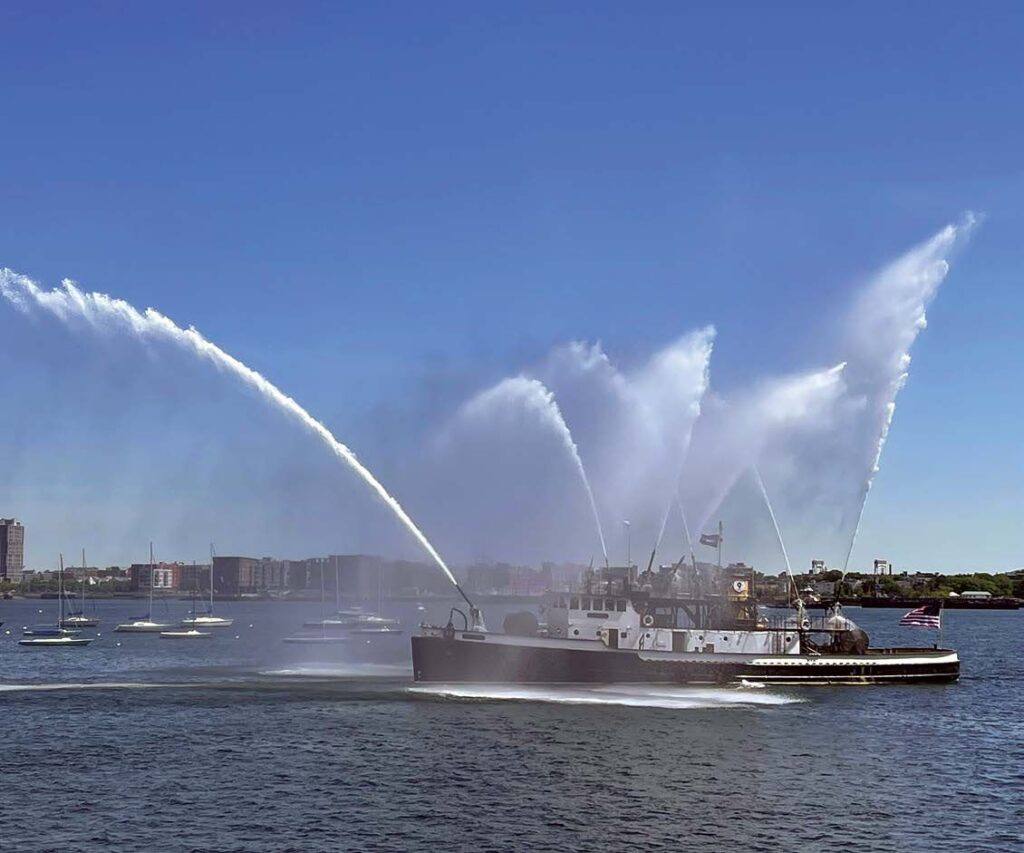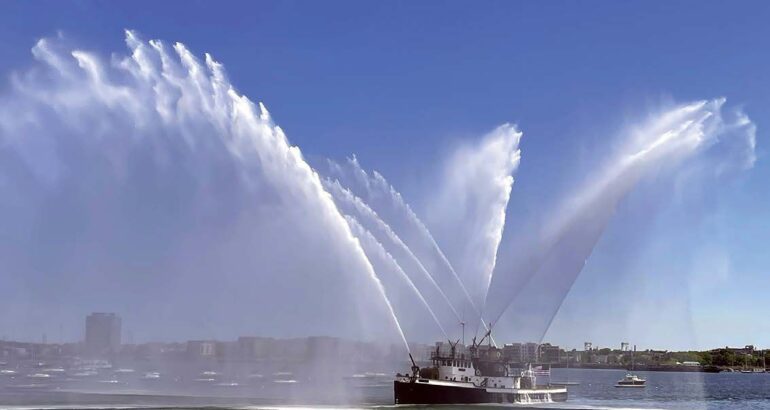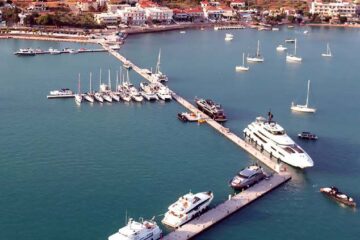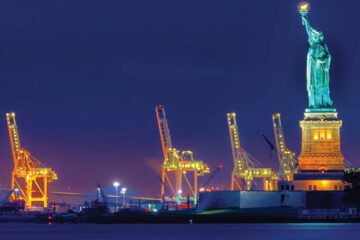by Warren Miller
The 1938 fire-fighting boat Fire Fighter was docked at the Moakley Courthouse Dock in Boston Harbor last June in conjunction with the National Fire Protection Association Conference & Expo. Public tours of the fireboat were offered.
But these tours were unique. Fire Fighter didn’t just stay at the dock for people to admire. Fire Fighter charged full-trottle into Boston Harbor, spraying jets of water and showing off the diesel-electric power that was a marvel when it was built.
“What’s unique about Fire Fighter is that it’s a working boat,” said James Tomes, president and CEO of the fire-protection company Telgian, who brought the boat to Boston. “It’s not a floating museum—it’s a fully functional boat. I mean, you can see the Constitution in Boston Harbor, but you can’t see it at work. Fire Fighter is small enough that you can take people out for corporate events, unlike most museum ships.”
Telgian brought Fire Fighter to Boston to help increase awareness of the fireboat’s unique status as an historic, working vessel and to raise funds for its preservation.
“Fire Fighter is the most award-decorated fireboat in the world and the embodiment of the commitment and sacrifice of firefighters and fire protection professionals across the nation,” said Tomes, who serves on The Fireboat Fire Fighter Museum Board of Directors. “The conference was an opportunity to show off this historic vessel and raise support for its preservation.”
Fire Fighter has protected the United States for more than seven decades, and during some of the most harrowing incidents in American history. Its resumé includes:
▪ the 9/11 terrorist attacks—Fire Fighter pumped water from the Hudson River for three weeks to support firefighting and recovery efforts at Ground Zero;
▪ the emergency water landing of US Airways Flight 1549—Fire Fighter participated in the rescue efforts of passengers aboard US Airways Flight 1549 when it landed in the Hudson River;
▪ World War II—Fire Fighter stood ready to protect New York harbor as ammo-laden ships prepared to depart for Europe and provided service during fires on the Normandie and munitions ship El Estero.
Designed by renowned naval architect William Francis Gibbs in 1938, Fire Fighter was considered a modern engineering marvel, capable of pumping 20,000 gallons of water per minute to nine topside fire monitors and powered by one of the first diesel-electric power plants ever fitted to a vessel of her size.
“It’s the same propulsion system as in a World War II submarine,” Tomes says. “It just doesn’t have batteries. The mains drive the generators that drive the screws.”

Her design was so advanced and her performance so impressive that throughout her entire 72-year active career—she was decommissioned in 2010— Fire Fighter remained in an essentially unchanged operational condition, outlasting all of her contemporaries and even the majority of the FDNY fireboats half her age.
The Fireboat Fire Fighter Museum is a 501c3 non-profit organization formed to acquire the boat and dedicated to preserving it as a fully operational vessel and teaching museum.
“A lot of the volunteers who crew Fire Fighter served on the boat,” Tomes says. “But we need a permanent home for her, and the maintenance and operational costs are substantial. Guys will volunteer their time to service her and manufacturers will sell parts at cost, but the boat has leather gaskets that need to be replaced regularly, and that means shipyard time. We really need a foundation to back us.”
Beyond the opportunity to experience a piece of history, Tomes says, there’s an inescapable takeaway for Fire Fighter’s visitors.
“Fire Fighter is a celebration of America,” he explains. “There are few things in our country we agree on anymore, but one of them is firefighters. Another is American expertise. In 1938, when we were coming out of the Great Depression, American craftsmen built a boat that was in service until 2010, more than 70 years. And it still works.”
Republished from Marine Construction Magazine Issue V, 2022









